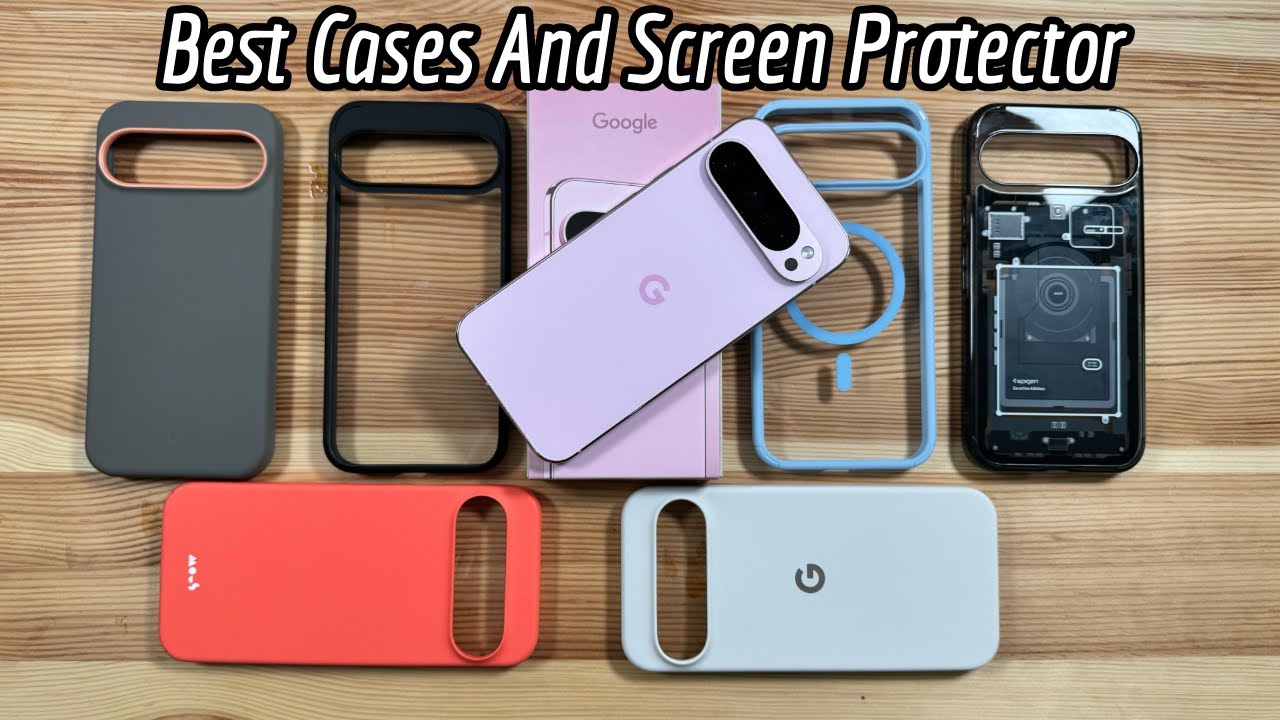Introduction to Smartphone Protection
Protecting your smartphone is no longer a luxury—it’s a necessity. With the rise of high-performance and expensive devices on the market, safeguarding our smartphones from daily wear and tear, accidental drops, and scratches has become more important than ever. Whether it’s the glossy back or the edge-to-edge screen, every component of a smartphone needs careful attention. Investing in a quality phone case and screen protector ensures your device stays in pristine condition and maintains its functionality for years to come.
The Importance of Phone Cases
Phone cases are the first line of defense when it comes to protecting your device. Beyond their aesthetic appeal, cases serve as a barrier against physical damage such as dents, cracks, and scratches. A well-designed case can absorb the shock of accidental drops, which is especially crucial given that smartphones are more fragile than they appear. Additionally, phone cases can help prevent dirt and dust from penetrating the ports and buttons, ensuring your device remains fully functional over time.
Types of Phone Cases: Materials and Features
Phone cases come in a variety of materials, each offering unique benefits. Silicone cases, for instance, provide excellent shock absorption while maintaining a slim profile. Hard plastic cases are highly durable and resistant to heavy impacts, though they may lack flexibility. Leather cases exude elegance and sophistication while offering moderate protection. Many cases today also include advanced features such as antimicrobial coatings, waterproof seals, and built-in kickstands. These options allow users to choose cases that fit both their lifestyle and protection needs.
The Significance of Screen Protectors
Screen protectors are as vital as phone cases when it comes to smartphone protection. The screen is one of the most vulnerable components of a device, often bearing the brunt of accidental drops or abrasive scratches. Screen protectors provide a transparent layer of safeguarding that keeps your display free from damage, preserving clarity and touch sensitivity. Neglecting this minimal investment could lead to costly screen repairs or replacements down the line.
Types of Screen Protectors: Materials and Features
Screen protectors are available in different materials to suit varying levels of protection and usability. Tempered glass protectors offer robust security against cracks and scratches, maintaining a seamless feel when interacting with the screen. Polymer (plastic) film protectors are thinner and more flexible, making them suitable for those who prioritize a lower-profile option. Advanced screen protectors now include features such as anti-blue light technology, privacy filters, and anti-smudge coatings, making them invaluable tools in modern phone protection.
Factors to Consider When Choosing a Case
Selecting the right phone case requires careful consideration of multiple factors. First and foremost is compatibility—ensure the case fits your phone model perfectly without obstructing ports, buttons, or the camera. Next, think about your daily activities; for instance, if you frequently engage in outdoor adventures, opt for a rugged case with military-grade protection. Style and aesthetics also play a part, allowing you to express your personality while keeping your device safe. Additionally, don’t overlook practical features such as wireless charging compatibility.
Factors to Consider When Choosing a Screen Protector
When choosing a screen protector, clarity and touch sensitivity should be top priorities. A good protector should not compromise the screen’s brightness or responsiveness to touch inputs. Durability is another critical factor; opt for protectors with a hardness rating of at least 9H for optimal protection against scratches and shattering. Finally, consider ease of installation. Many brands offer installation kits that prevent frustrating bubbles during application, ensuring a flawless finish.
Top Brands in Phone Protection
Several brands have established their reputation for offering premium phone cases and screen protectors. OtterBox is a household name, known for its rugged and durable cases that can withstand extreme conditions. Spigen combines sleek designs with adequate protection for a more affordable option. For screen protectors, ZAGG’s InvisibleShield lineup leads the market, offering a variety of tempered glass protectors with additional features like anti-microbial coatings. Belkin and ESR are other popular brands known for their innovative solutions in screen protection.
Installation Guide for Screen Protectors
Installing a screen protector doesn’t have to be a daunting task if you follow a few essential steps. Begin by thoroughly cleaning the screen with the included cleaning wipes and a microfiber cloth to remove any dust and fingerprints. Use the alignment tools or guides provided in the kit to position the protector accurately over the screen. Starting from one edge, carefully peel the backing and press down gently, allowing the adhesive to bond. Use a squeegee or card to eliminate any air bubbles, ensuring a smooth, clear finish.
Cleaning and Maintenance Tips
Proper maintenance of your phone case and screen protector can extend their lifespan and ensure continued protection. Regularly clean the phone case using a mild soap solution and a soft cloth to remove dirt and grime. For screen protectors, use alcohol-free cleaning wipes or a damp microfiber cloth to avoid damaging coatings. Inspect both the case and protector periodically for wear and tear, replacing them if you notice any significant damage that compromises their functionality.
The Future of Phone Protection Technology
The world of phone protection is constantly evolving, with new technologies on the horizon. Expect to see cases embedded with smart capabilities, such as built-in trackers to prevent loss or theft and sensors to monitor device health. Similarly, ultra-thin screen protectors with self-healing properties are emerging as a promising solution. There’s also a growing emphasis on sustainability, with brands using eco-friendly materials to create cases and protectors that are both effective and environmentally responsible.
Ultimate Phone Protection Matters
Your smartphone is more than just a device—it’s your connection to the world, your work, and your memories. Investing in high-quality phone cases and screen protectors is essential for safeguarding this invaluable tool from the challenges of daily life. Whether you prioritize sleek aesthetics or heavy-duty durability, there’s a protection solution out there for everyone. By choosing the right products, you can enjoy peace of mind and keep your device looking and working like new for years to come.
Frequently Asked Questions (FAQ)
Q1. Are thick phone cases better for protection?
Thicker phone cases often provide better protection, especially against impacts and drops. However, they can add bulk and may not suit everyone’s preferences. Look for cases that balance protection and comfort.
Q2. Can a tempered glass screen protector prevent a screen from cracking?
Yes, tempered glass screen protectors are designed to absorb impact and reduce the risk of the screen cracking. While not foolproof, they can significantly minimize damage from drops.
Q3. How often should I replace my phone case or screen protector?
Replace your phone case or screen protector if it shows signs of significant wear, such as cracks, scratches, or reduced effectiveness. Regular inspections every few months can help you decide.
Q4. Can phone cases interfere with wireless charging?
Some cases, particularly those made from thicker materials or containing metal components, can interfere with wireless charging. Look for “wireless charging compatible” labels when purchasing.
Q5. Are there eco-friendly options for phone protection?
Yes, several brands now offer eco-friendly phone cases made from biodegradable or recycled materials. These options allow you to protect your phone while being mindful of the environment.




